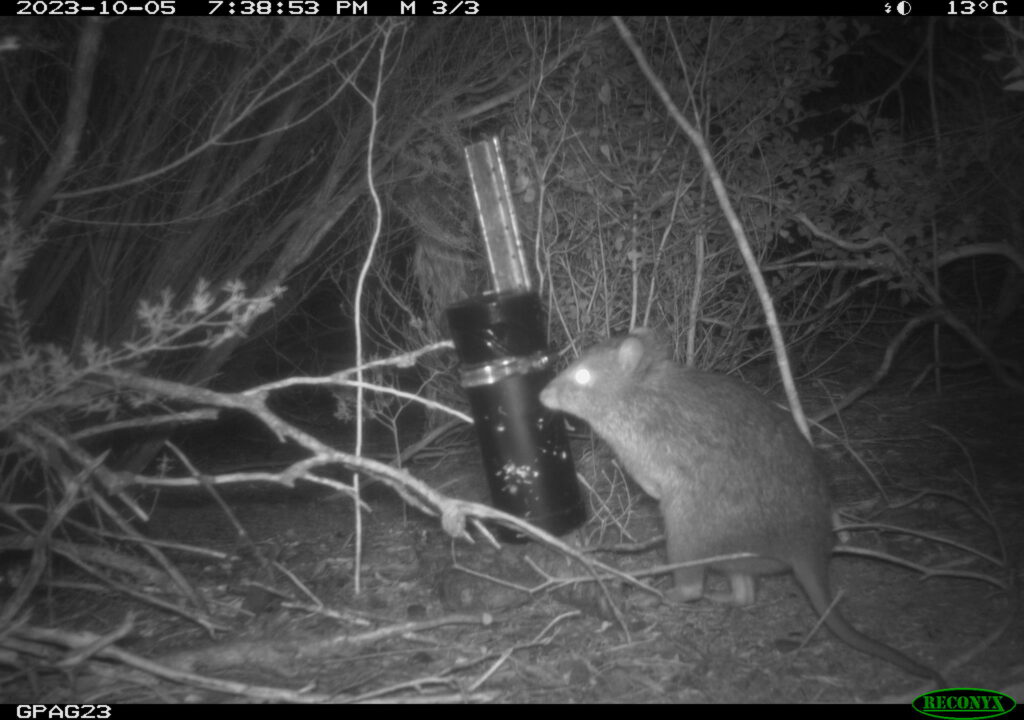Infra red image of a Gilbert’s potoroo taken on a camera trap during the August wildlife survey of Middle Island. Photos: DBCA
Gilbert’s Potoroo is the rarest marsupial in the world, and scientists on a field trip last month say the critically endangered little mammals are starting to breed on Middle Island.
They caught two potoroos on the island last month, one of which was a mother with young in her pouch.
DBCA regional ecologist Sarah Comer said finding a suitable island refuge had been vital to preserving the species, which was only known to occur at Two Peoples Bay near Albany.
Bushfire Destruction
“Those terrible fires in 2015 destroyed 90 per cent of habitat left at Two Peoples Bay, so establishing another population was a priority,” she said.
“We were looking at the idea of island refuges free from introduced predators, and Middle Island looked good in terms of underground fungi, truffles.
“The good news was that it was similar to Two Peoples Bay which is all part of the Albany-Fraser granite system.”
After an initial trial Dr Comer said they left 10 potoroos at Middle Island in 2018, and the second follow-up survey of the island since shows they are breeding.
“The work we did recently was trying to get a handle on how the animals are going, given they have been there for over five years,” she said.
“The animals we caught this time were both new animals.
“It’s pretty exciting to know the island is able to sustain a healthy population of Gilbert’s potoroo.”

Rangers Help
Dr Comer said the scientists were on the island, helped by Tjaltjraak Rangers, from August 5 to 9 using a combination of cameras and traps to survey the potoroos.
“We need to do a heap of analysis but the fact that eight out of 10 cameras are recording potoroos is very encouraging,” she said.
“We learned that the animals are not only persisting and breeding but they are also getting enough food to be in pretty good condition.
“The two animals we caught were really healthy, so the island has done its job in terms of sustaining a population.”
Dr Comer said the results would help them make better decisions when it came to managing the small numbers left of the species, which were now spread over four monitored populations.
“It will help us determine whether we add more individuals of that species to Middle Island, or potentially take some individuals off the island to add to another population,” she said.
“We have left 13 camera traps that will tell us how widespread the potoroos are across the 1080-hectare island.”
Beside the potoroo survey, Dr Comer said they also sampled leaf litter invertebrates to look at potential food sources for Noisy Scrub Bird, which was also a candidate for relocation to Middle Island.
The 11-person team included DBCA officers, Esperance Tjaltjraak rangers and Odonata Foundation staff.




